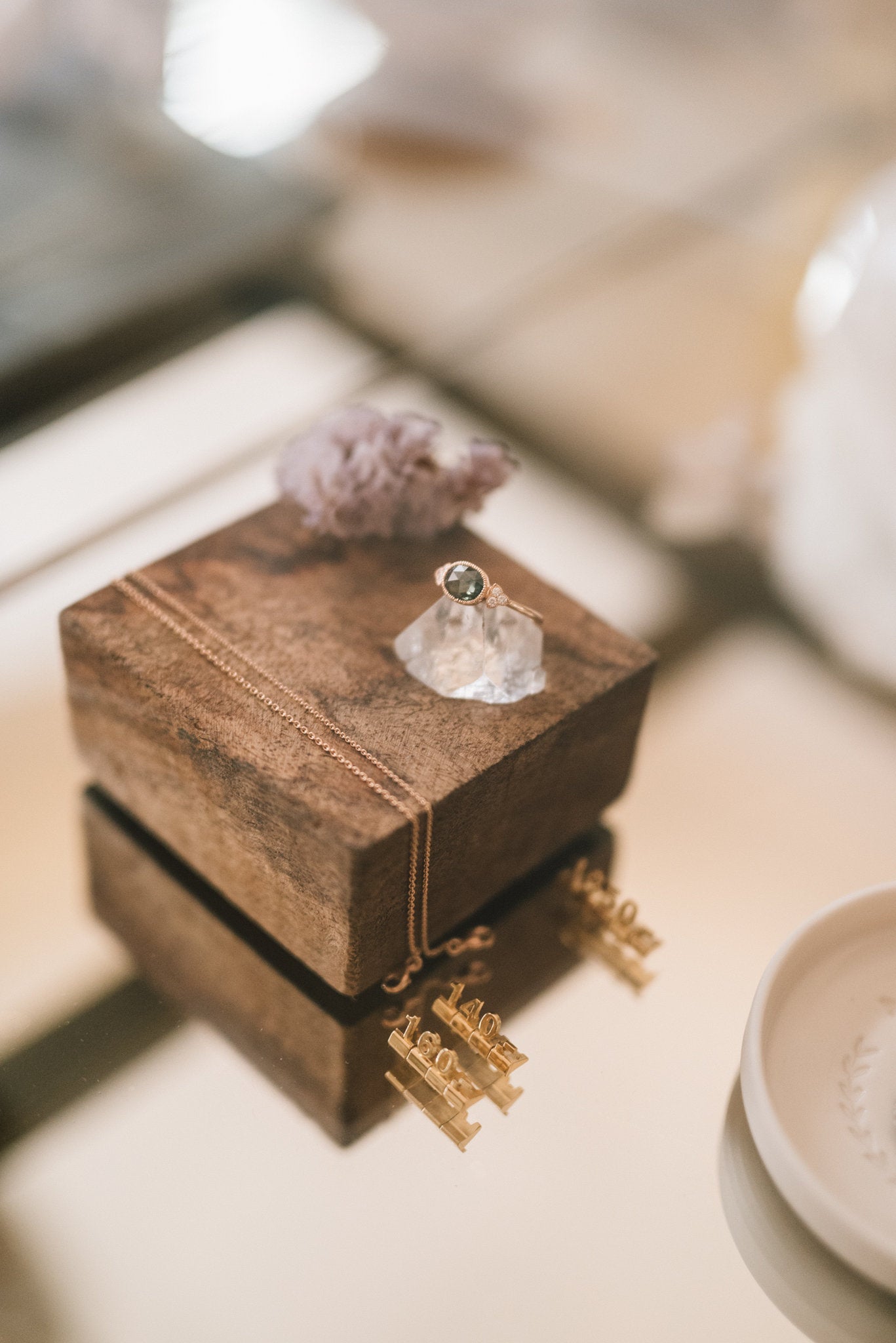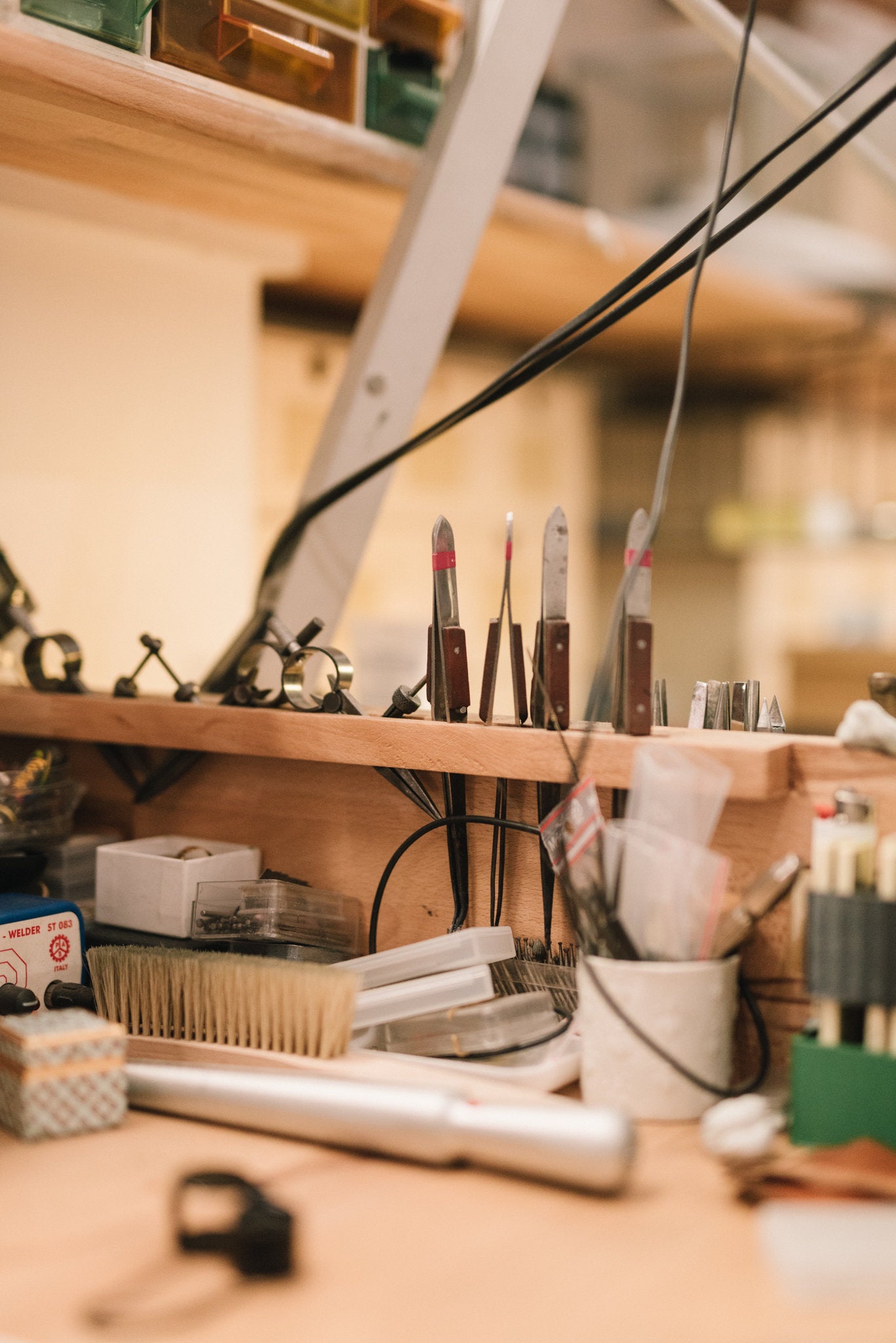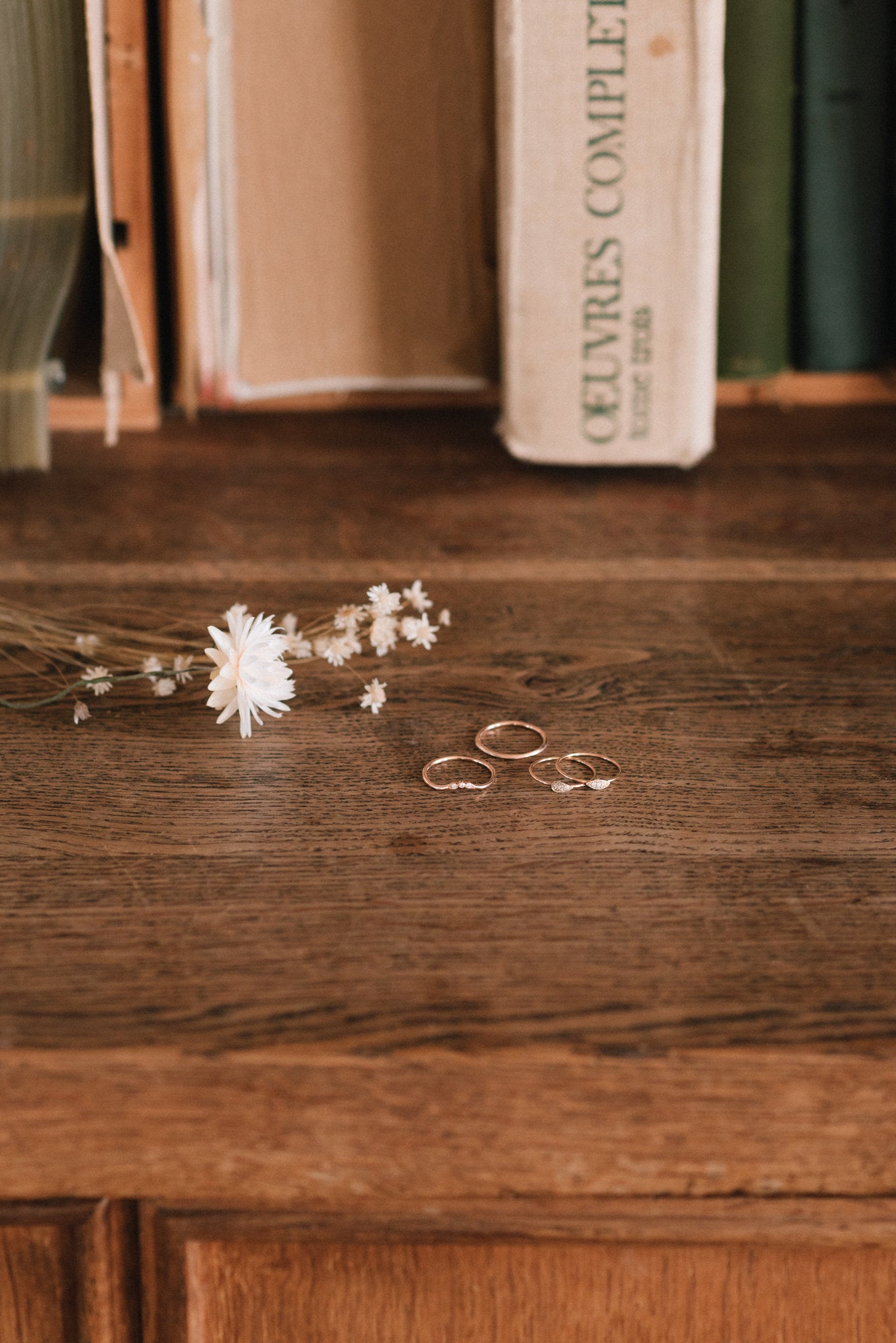Our Gold
Sensitive to the principle of environmental responsibility, our artisanal Brand began very early (since our creation in 2008) to take an interest in the question of the transition to ever more responsible gold. While certifications (such as RJC-COC: Responsible Jewellery Council and the Chain of Custody standard) arrived quickly and helped us to meet our ethical needs and our customers' expectations, we worked behind the scenes to be at the forefront of new developments in our sector, notably on the subject of recycled gold.
For many years, we have been challenging our partners to switch to recycled gold, and we were initially confronted with technical and commercial limitations that prevented us from making the switch to 'all recycled' that we wanted to achieve.
But since 2022, it's a done deal: today, we are proud to use RJC-COC and Origine "France Garantie" certified recycled gold to manufacture 95% of our jewelry. Some of ourwedding bands models for men (comfort, demijonc), our chains and primers (goosenecks, butterfly earrings, snap hooks...) are not yet made from recycled gold, for the same reasons as above, but are made from ethically extracted gold certified RJC-COC and Origine "France Garantie".
Our aim is to reach 100% and keep abreast of responsible innovations for the future of our planet, our ancestral craft and our artisanal jewellery industry.
ABOUT RECYCLED GOLD
To further our eco-responsible approach, 95% of our jewelry has been made from recycled gold since 2022. Gold mining is unfortunately a polluting activity, using water, fossil fuels and chemicals. That's why we've been looking for solutions for many years, enabling us to gradually work with recycled gold.
Myrtille relentlessly questioned our partners about their evolving practices, in order to seize the transition opportunities open to us as artisan jewelers. One of our partners, a gold smelter, was interested in our approach and took the necessary steps to offer us 100% recycled gold.
This recycled gold comes from old jewelry, production scraps from the jewelry and watchmaking sectors, but also from industry and IT. The recycling circuit is strictly regulated, and our smelter receives with its alloy pots certificates attesting to the titration of the gold and its origin.
The recycling process involves melting down all this scrap gold, refining it and extracting fine gold (999 thousandths) for reworking. This reduces emissions harmful to the planet and gives the material a second life at the very least: gold can be recycled ad infinitum, without losing its initial qualities and properties.
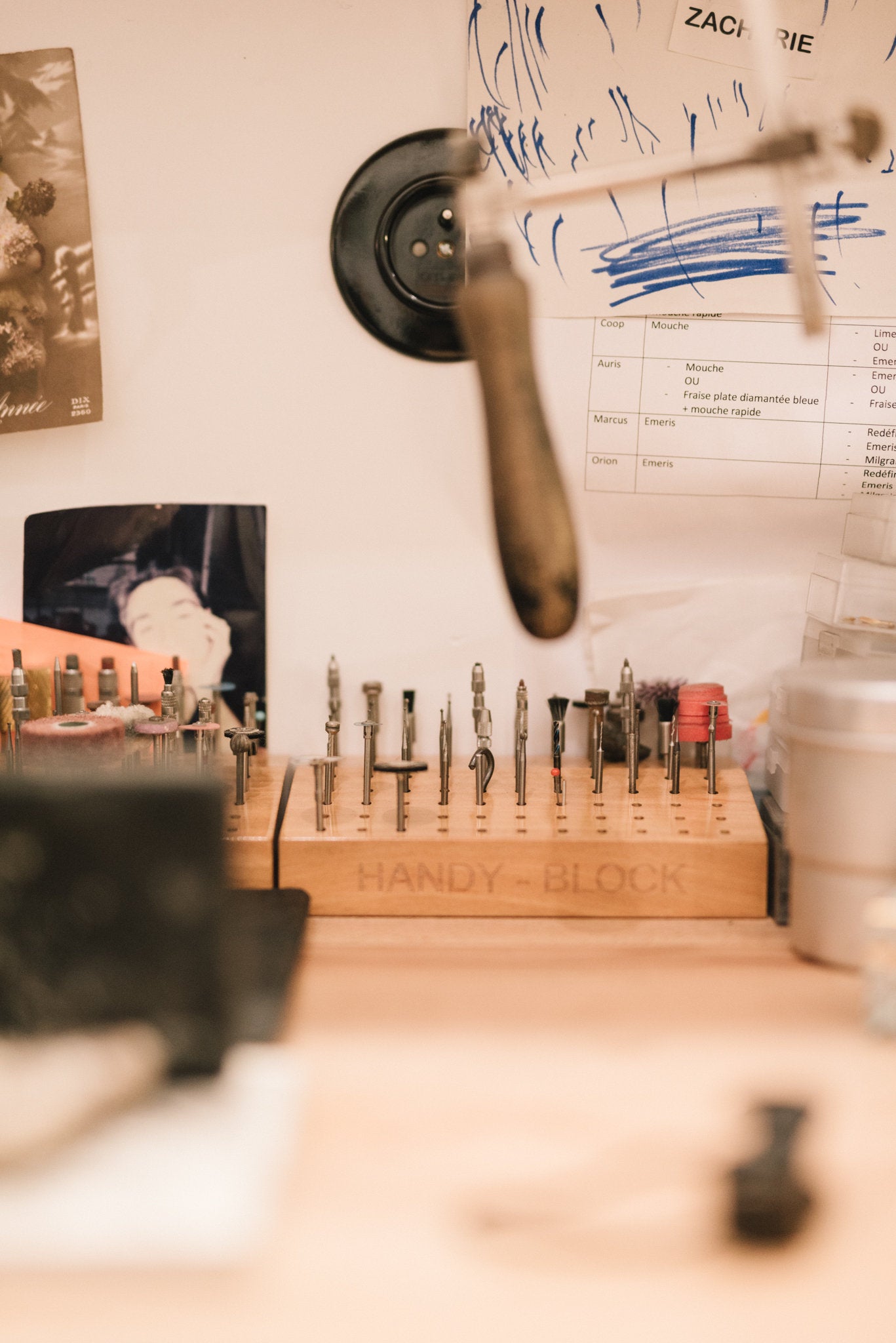
ABOUT RJC-COC GOLD
The RJC, or "Responsible Jewellery Council", of which our gold suppliers are members, is an international organization that brings together companies in the jewelry and watchmaking sector, as well as their suppliers, to promote a corporate policy that integrates ethical, social and environmental issues, as well as respect for human rights.
This certification attests to the moral and ethical nature of the gold we offer, and guarantees its traceability from extraction to processing. This is traceable gold, mined in French Guiana with respect for local populations and the environment.
It is called "clean gold", as opposed to gold from conflict zones or extracted using toxic processes.
As part of a statement of commitment to business practices, known as the Code of Practices (CoP), RJC Certified companies commit to certain core principles listed below.
The gold alloys used in the manufacture of jewellery do not contain :
- Whose procurement has violated human rights, for example child labour or slavery
- Whose extraction and processing destroyed the earth's surface...
- That are harmful to the environment
- Which are used to support criminal or terrorist activities (e.g. money laundering, tax evasion, etc.).
Today, it's the most responsible alternative, complementing our use of recycled gold.
The Chain of Custody (CoC) Standard builds on and complements the Code of Practice. It is voluntary for RJC members, and defines a number of requirements for creating a responsible end-to-end supply and traceability chain for precious metals.
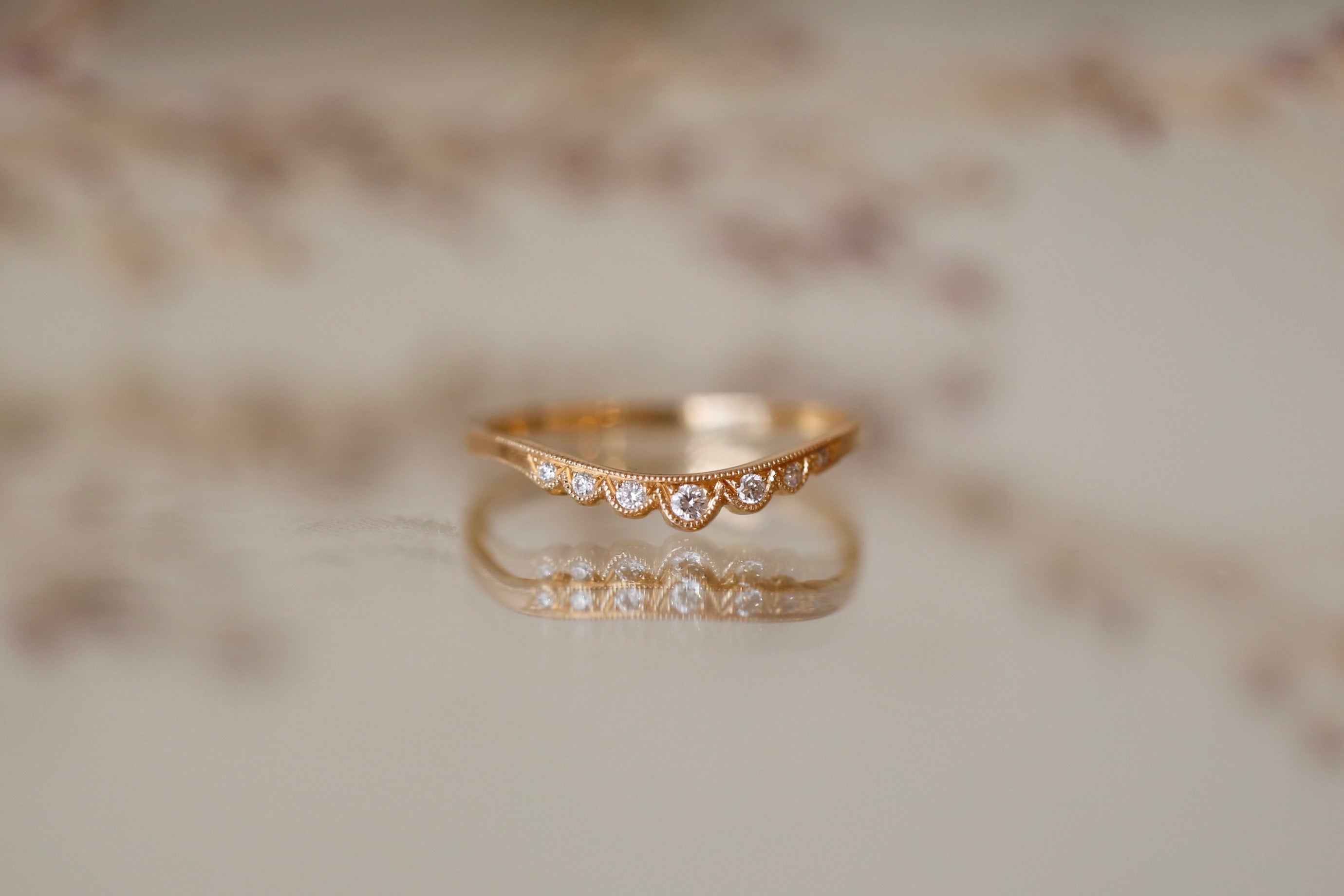
rose gold 750 MILLIÈMES
It's our favorite color, and we use it for the majority of our precious jewelry. It's made from an alloy of 75.3% fine 999 thousandths gold, 4.2% fine silver and 20.5% copper. We love its color, which blends delicately with the skin, and it's a best-seller among our male customers, who appreciate the discreet, melting effect of this gold color on the skin. It's a color that goes perfectly with most skin tones.
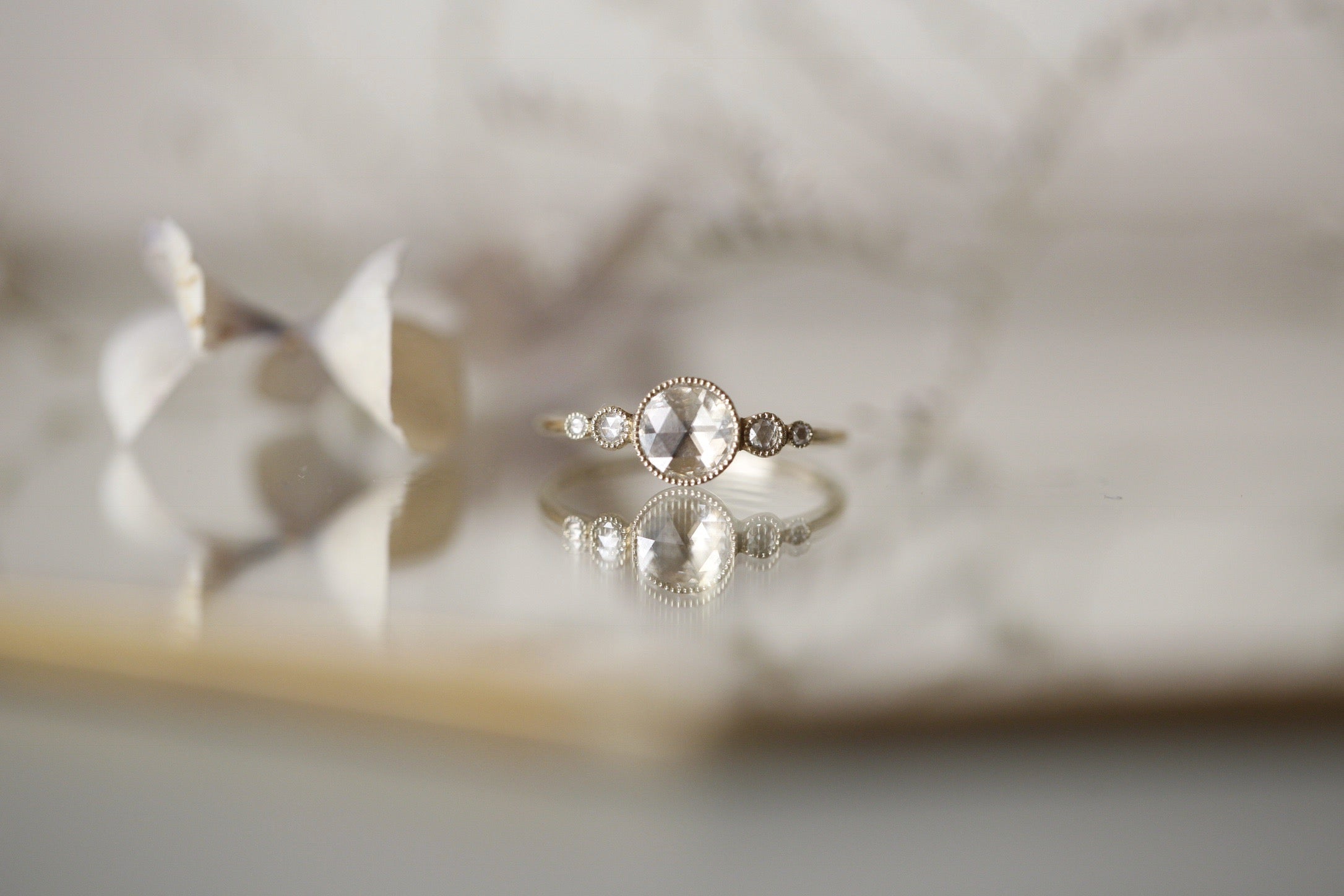
grey gold 800 MILLIÈMES
Composed of 80.1% 999 thousandths fine gold, 1.4% fine silver and 18.5% white metals. Although the exact composition of white metals is kept confidential by our suppliers, it is certified that our grey gold complies with the above-mentioned certifications. It's a grey gold with warm golden highlights. Our male customers and some of our female customers accustomed to white gold find it an alternative to white gold. In addition to its warm glow, it requires no special maintenance and, over time, develops a beautiful patina. It goes very well withrose gold, giving a vintage look to the assemblies. We decided not to use white goldgrey gold + rhodium plating), both for aesthetic reasons and from a health point of view, as rhodium plating contains products that are toxic for our teams and highly polluting during electrolysis.
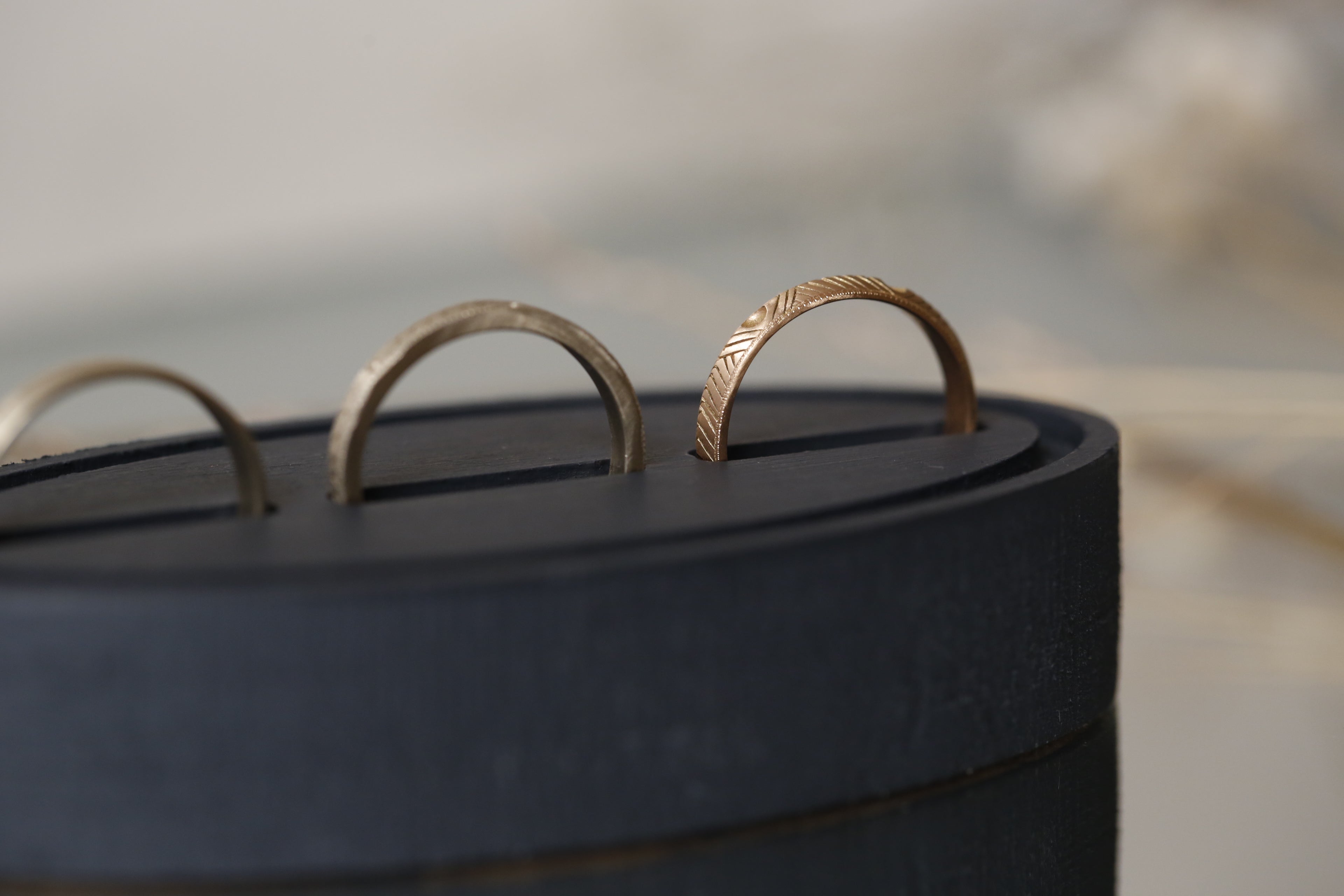
750 THOUSANDTHS YELLOW GOLD
Composed of 75.3% 999 thousandths fine gold, 11.8% fine silver and 12.9% copper.
Its color is very bright and sunny.
We use it in necklaces, bracelets, earrings and rings for men.
It is the classic color par excellence of the traditionalwedding band demi-jonc for men.
As we are committed to designing jewelry that will stand the test of time and be handed down through the generations, we do not use yellow gold on our fine rings to avoid any risk of deformation, as the alloy of yellow gold is more malleable than that ofrose gold andgrey gold. For ladies' rings, we prefer the pinkish-yellow color shown below.
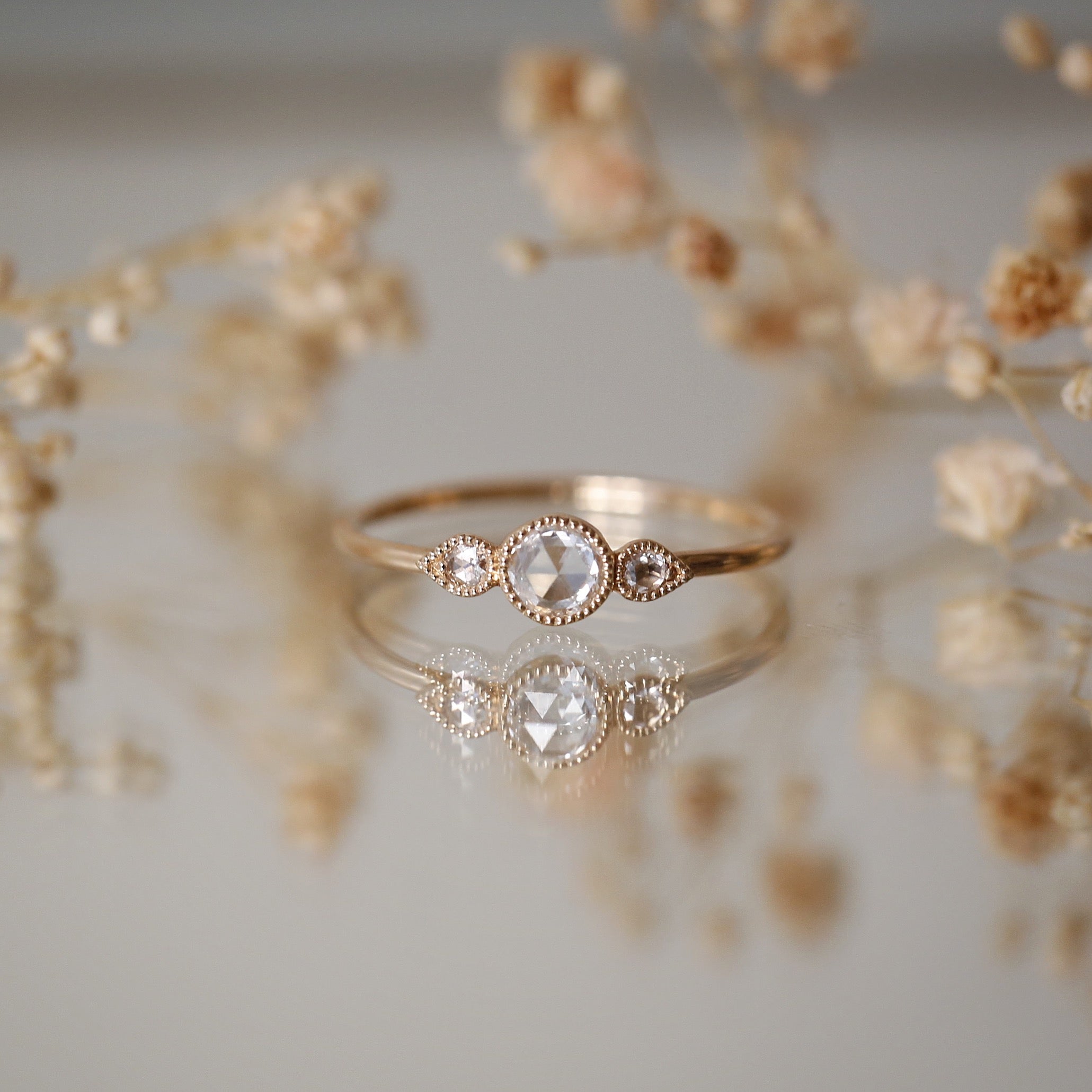
PINKISH YELLOW GOLD 750 THOUSANDTHS
Composed of 75.3% 999 thousandths fine gold, 8.9% fine silver and 15.8% copper.
This is the intermediate color between yellow gold and rose gold, and we use it for our customers who are used to wearing yellow gold, as it gives us greater strength and solidity for fine rings.
What is 750-thousandths gold?
750-thousandths gold used to be called 18-karat gold. The thousandth title became mandatory in 1995 and replaced the carat. The carat was a unit of measurement for the purity of precious metals. 1 carat represents 1/24th of the total mass of an alloy. That is to say that in 24 grams of gold at 18ct, there are 18 grams of fine gold. 24ct corresponds to fine gold. The passage to the thousandth made it easier to understand the percentage of gold contained in a jewel. For example, a 750 thousandths gold jewel contains 75% fine gold in its alloy.
